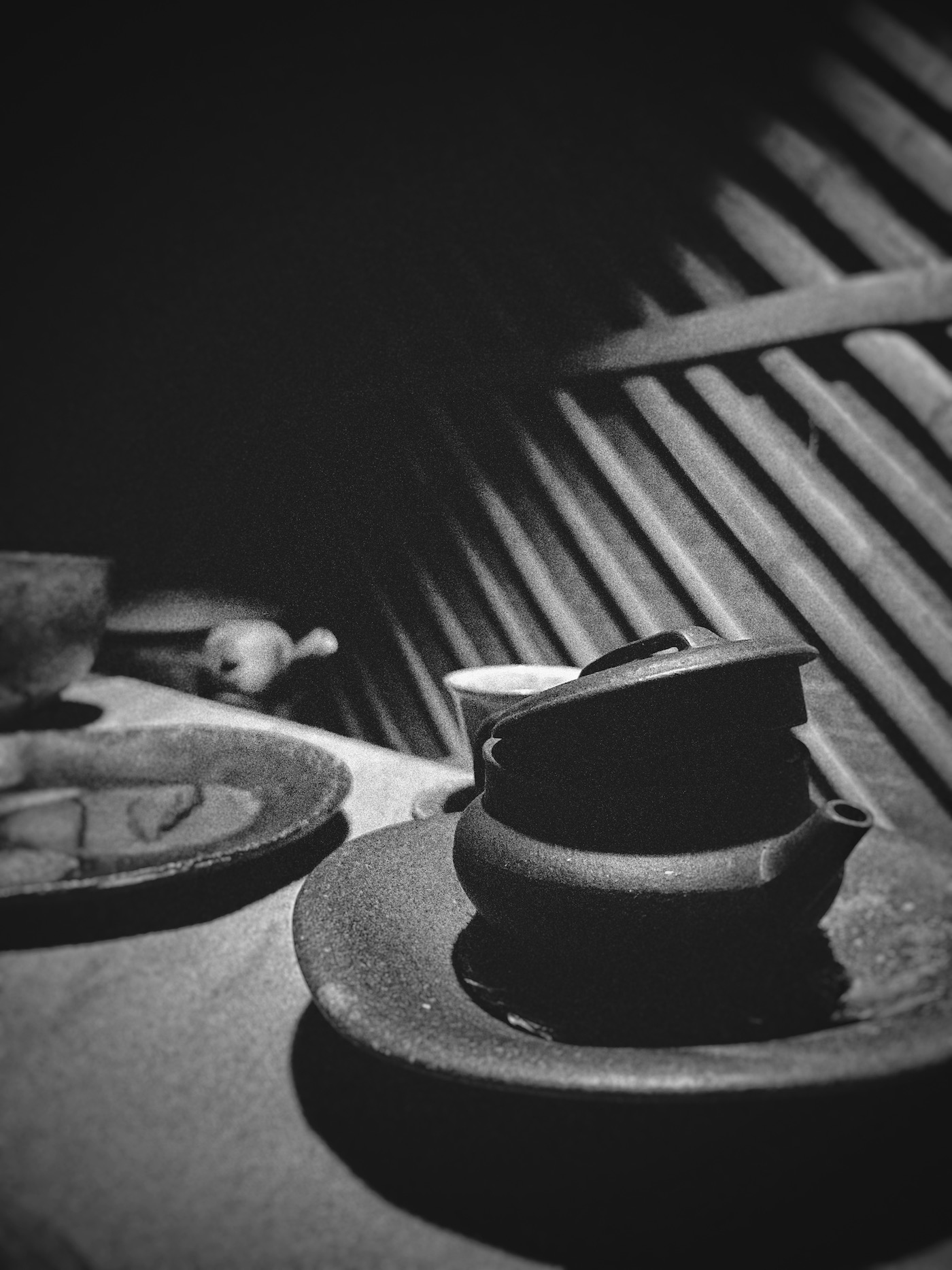To question and define the essence and existence of tea ceremony has been a topic of interest for many, and concurrently a legitimate concern for some due to multifaceted misunderstanding and appropriation. To comprehend and anthropologically reframe the notion of ceremony in the context of tea and its colorful culture appears to be key in the shaping and cultivation of the plurality of tea-based practices today.
Although historically and culturally bathing in Taoism and Buddhism, tea does not initially hold a religious dimension. The made-up term ‘tea ceremony’ implies a sense of sacredness and foster an inherent esotericism, leading to a natural appeal for the somewhat arcane peculiarity and inaccessibility of the tea practices that it carries to the non-initiates. From a linguistic perspective however, there is no specific word equivalent to ‘tea ceremony’ in Chinese or Japanese, with most of the historical and cultural terms used tending to be predominantly descriptive.
In Japanese tea traditions, chanoyu 茶の湯 literally means ‘hot water for tea’, and the broader word chádào/chadō/sadō 茶道 is often described as ‘the way of tea’. The Chinese term gōng fu chá 工夫茶 or diǎn chá 点茶, respectively ‘preparing and serving tea with skills’ and ‘whisked tea’, do not clearly suggest a ceremonial attribute, and the absence of formal schools, codification, and recognized titles seen in traditional Japanese tea practices contribute to supporting this fact. The wedding Chinese custom of jing cha 敬茶 – a time-honored tradition where the bride and groom express their gratitude and respect to their parents and elders by serving them tea, binding both families – appears to be rightly ceremonial, as it is being rooted in marriage and often religion, but remains however equally descriptive (‘to serve tea’).
In this matter, it seems critical to (re)consider the definitions of the words ‘ceremony’, ‘ritual’, and ‘practice’, hereafter given by Cambridge Dictionary:
Ceremony (n.):
- A set of formal acts, often fixed and traditional, performed on important social or religious occasions;
- Very formal and polite behaviour;
Ritual (n.):
- A way of doing something in which the same actions are done in the same way every time;
- A fixed set of actions and words, especially as part of a religious ceremony;
Practice (n.):
- Something that is usually or regularly done, often as a habit, tradition, or custom;
From a linguistic standpoint, while the term ‘tea sharing session’ would be deemed broader, more neutral, accessible, and somewhat conveying a sense of detachment and aimlessness, the more accurate (but subject to imperfections) designation of ‘ritualized tea practice’ appears to be an appropriate and meaningful replacement for the misnomer ‘tea ceremony’. A ritualized tea practice is commonly further expressed through the conceptualization and crafting of a cháxí 茶席 (tea stage) and the space in which it is arranged, which then become an artistic, philosophical, and practical extension of tea and its practitioner. Alternatively, traditional and historical tea practices would gain as being introduced as such (i.e. ‘chanoyu 茶の湯’ as being ‘chanoyu 茶の湯’), using their original, cultural, intended names in lieu of general, fabricated denominations and translations that ultimately fail to faithfully reflect the true essence of the practices that they sustain.
Of all those denominations, one that perhaps best captures and encapsulated the nature of ceremonialism in tea from an aesthetic, philosophical, and spiritual perspective is ‘teaism’, coined by Okakura Kakuzō 岡倉覚三 in 1906 through his work The Book of Tea (Cha no hon 茶の本). While teaism is primarily Japanese in its conceptualization – being the result of a synergistic merging of the distinctions stemming from the terms ‘chanoyu 茶の湯’ (describing the practice of tea) and ‘chadō 茶道’ (referring to the way of tea as a spiritual path) – and potentially abstract for some, it was conceived to naturally convey a dedication for the art of tea from a cultural and practical viewpoint, a sense of harmony with nature, an introspective quality, and a simplicity and humility induced by tea, concurrently avoiding the pitfalls commonly cultivated by the process of translation.
On coining the term ‘teaism’, Okaruka writes:
“Tea began as a medicine and grew into a beverage. In China, in the eighth century, it entered the realm of poetry as one of the polite amusements. The fifteenth century saw Japan ennoble it into a religion of aestheticism – Teaism. Teaism is a cult founded on the adoration of the beautiful among the sordid facts of everyday existence.”
[…]
“The Philosophy of Tea is not mere aestheticism in the ordinary acceptance of the term, for it expresses conjointly with ethics and religion our whole point of view about man and nature.”
[…]
“It (Teaism) inculcates purity and harmony, the mystery of mutual charity, the romanticism of the social order. It is essentially a worship of the Imperfect, as it is a tender attempt to accomplish something possible in this impossible thing we know as life.”
On translation, Okaruka says:
“Translation is always a treason, and as a Ming author observes, can at its best be only the reverse side of a brocade.”
Ultimately, the shapeless flavor of ceremony in tea stands as a catalyst where the idiosyncrasies of its practitioners are allowed to shine freely, regardless of their respective interest, culture, or tradition. Within intentionally crafted spaces, the perfume of impermanence tends the quietness of the heart, creating a universal bound, respect, and understanding with and for tea. With and for Life itself. Like the wind that flows through all of Nature.
———
If you appreciate this piece of writing, please consider contributing to Le cerf-volant’s endeavor through a donation. Thank you for your unwavering and precious support.

